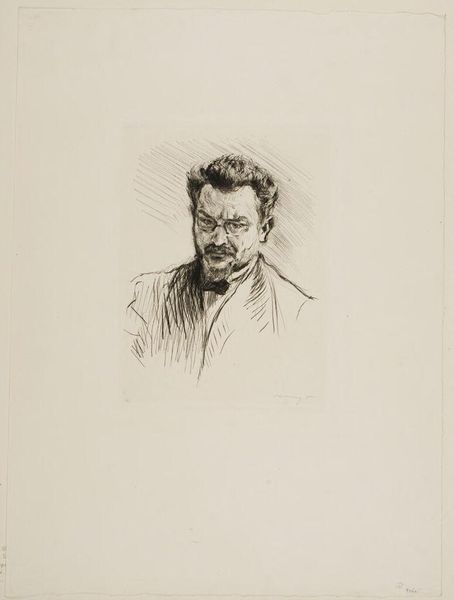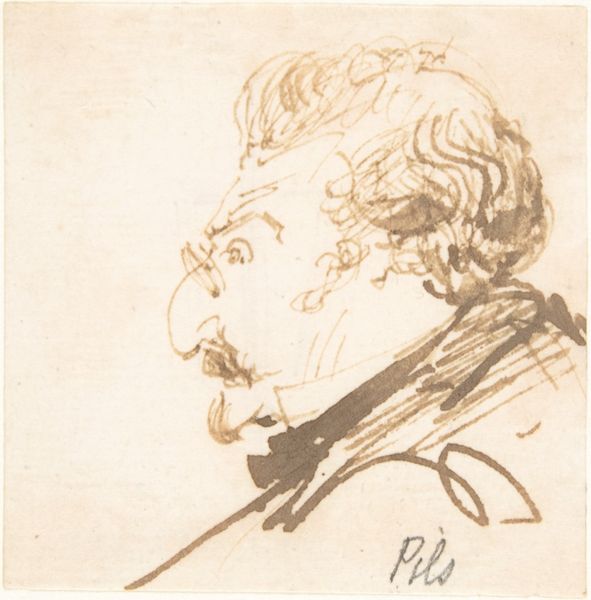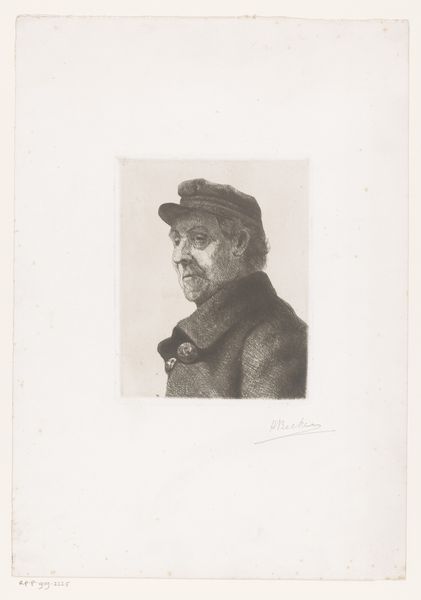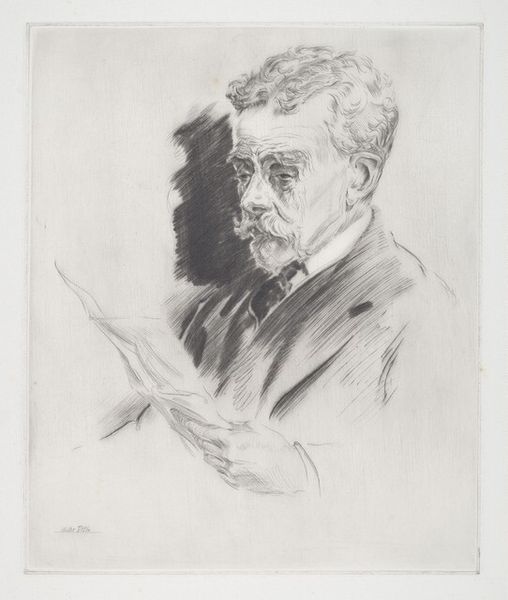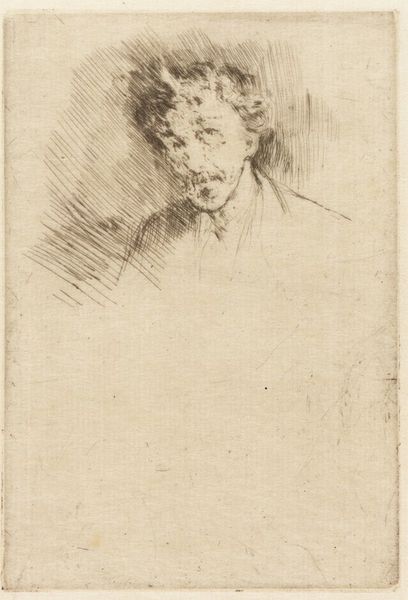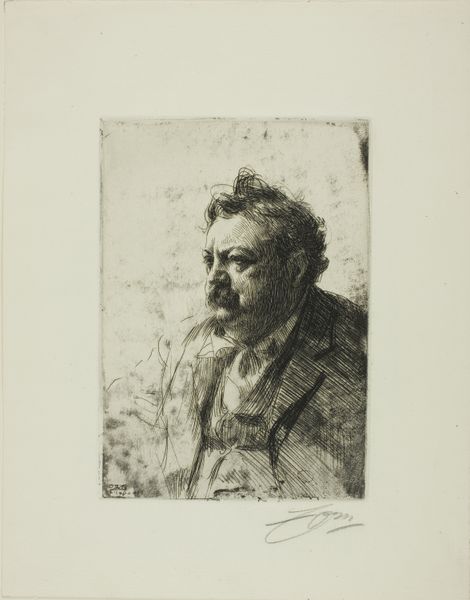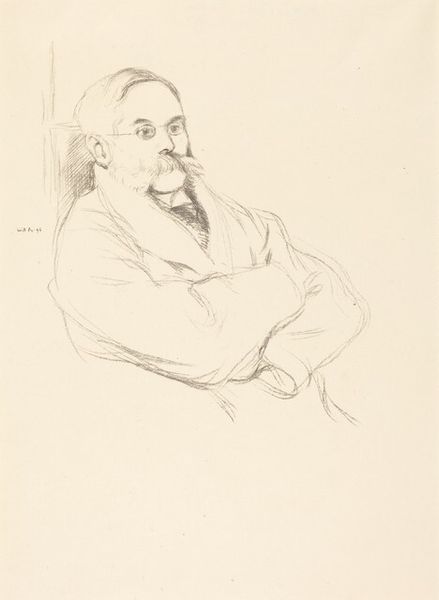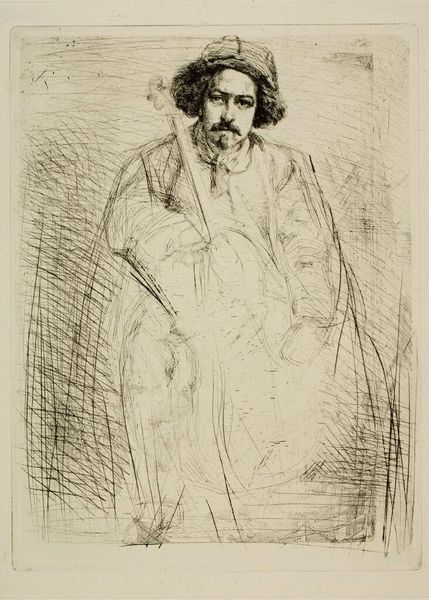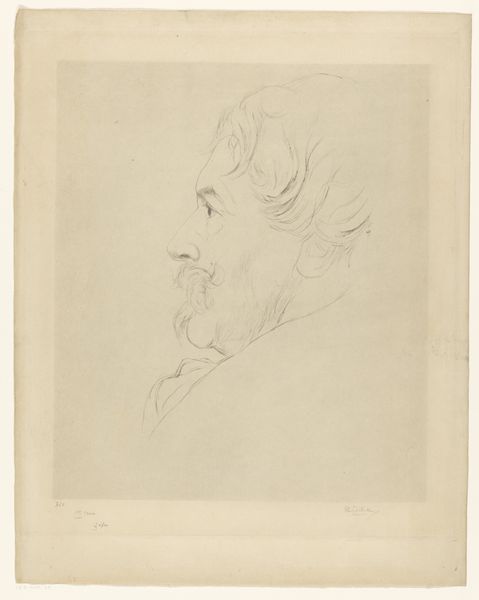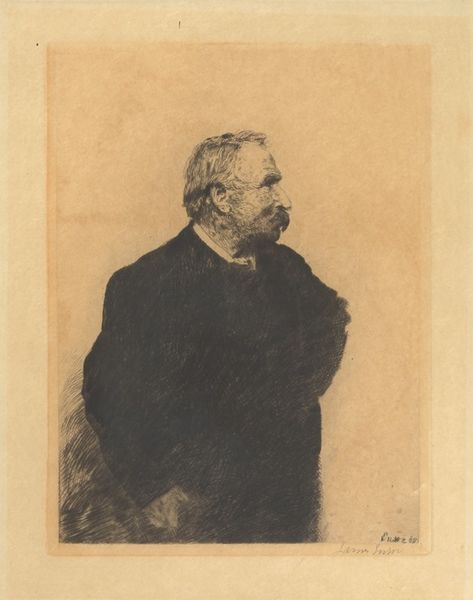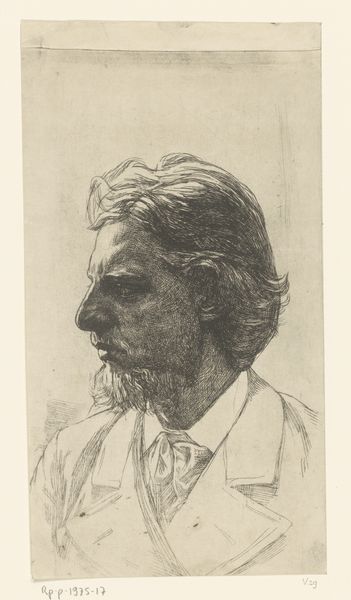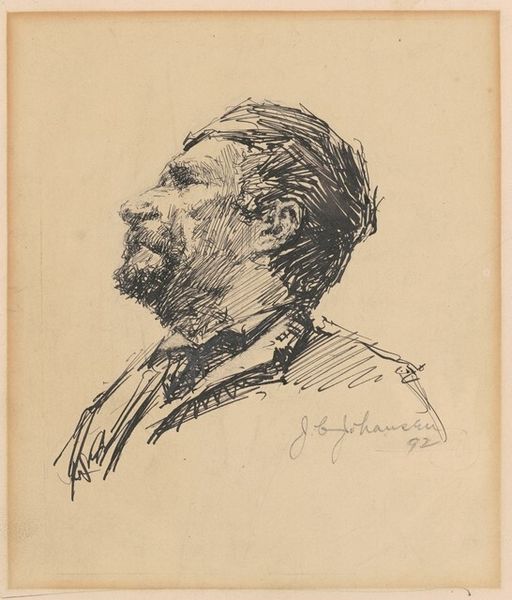
drawing, etching, graphite
#
portrait
#
pencil drawn
#
drawing
#
etching
#
charcoal drawing
#
pencil drawing
#
graphite
#
portrait drawing
#
modernism
#
realism
Dimensions: plate: 30.48 × 25.4 cm (12 × 10 in.)
Copyright: National Gallery of Art: CC0 1.0
Curator: Editor: This etching, "Monsieur Aristide Briand, Former Premier of France," was created by Walter Tittle in 1921. The stark lines and shading really make Briand’s features pop, but there is almost an unfinished quality that draws my eye. How do you interpret this portrait, especially thinking about its material presence? Curator: Well, consider the etcher’s labor, the act of incising that plate. Tittle is not just representing Briand, he's participating in a printmaking process rooted in specific material conditions – the availability of copper plates, the acids used, the printing press itself. Do you see any evidence of the artist's hand or process within the work itself? Editor: I do, actually! Now that you point it out, I see areas where the lines seem more hesitant, or where the shading is built up in layers. It makes me think about Tittle physically making this artwork and the labor it required. Also, was etching a common process to use for portraiture? Curator: Absolutely. Etching allowed for relatively quick reproduction, which democratized portraiture to some extent, allowing a wider audience access to images of prominent figures. Who was meant to consume the images, how and where? Consider the shift towards mass media and the production of images for political recognition in this period of nascent globalization and propaganda. It almost challenges traditional portraiture since there are so many multiples produced from a single plate, compared to painting only having one original copy. Editor: I see! It's more than just a picture of a person; it's about how that image was made and who had access to it. I never thought about it from the manufacturing side. Curator: Precisely! Focusing on these elements gives us a much fuller appreciation of the work and its role in society. What have you learned looking through a materialist lens? Editor: That art isn't just about the subject, it is a byproduct of materials, technologies, and processes that are culturally determined. It almost grounds what feels esoteric, thank you!
Comments
No comments
Be the first to comment and join the conversation on the ultimate creative platform.
